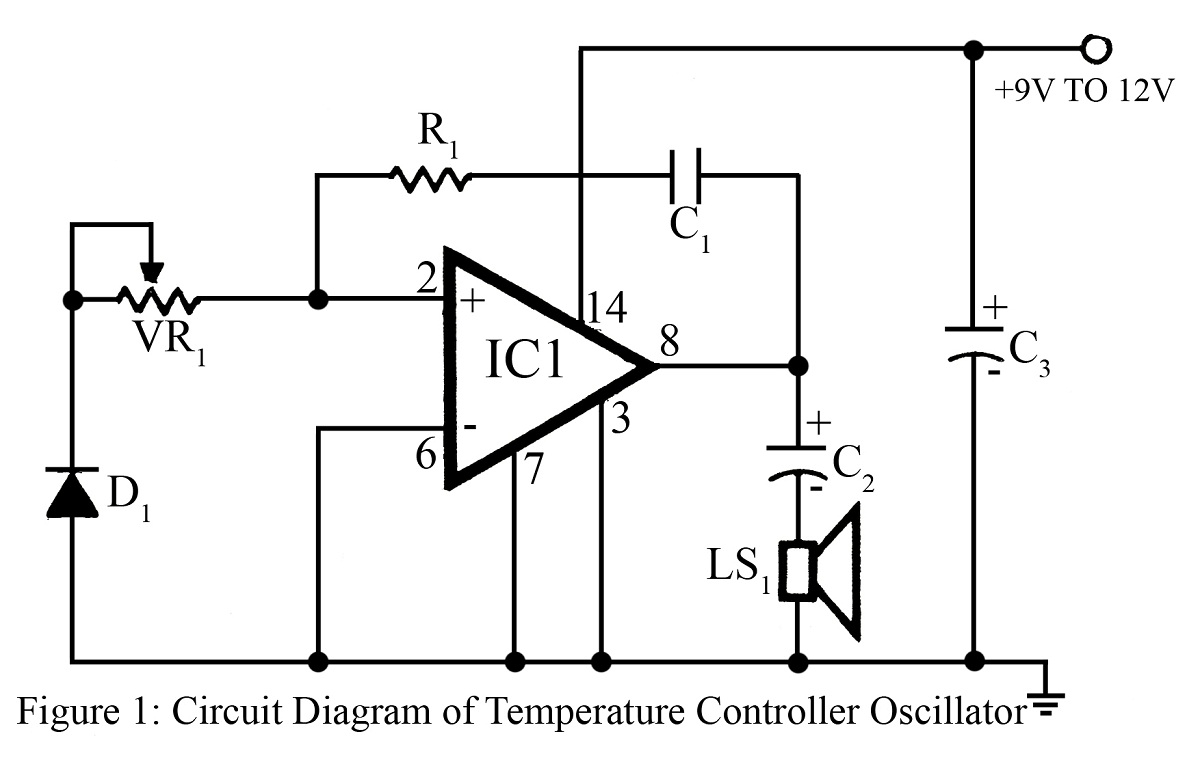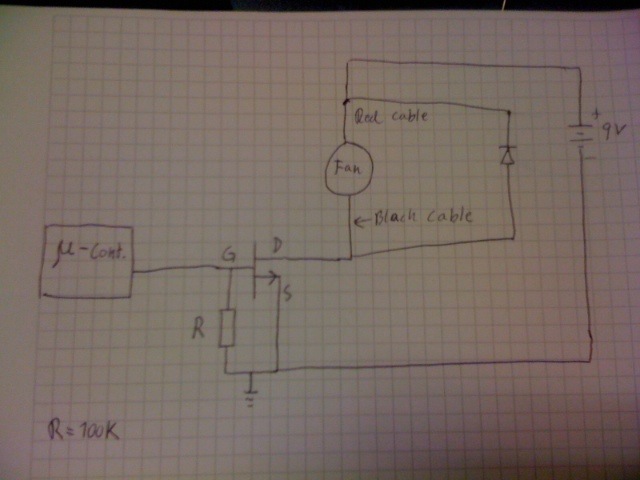
Automatic Temperature Controlled Fan

An automatic temperature-controlled fan regulates the fan speed based on temperature variations using the temperature transducer AD590 and an op-amp LM324 circuit diagram.
The automatic temperature-controlled fan circuit utilizes the AD590 temperature transducer, which provides an output voltage that is linearly proportional to the absolute temperature in Kelvin. This transducer is connected to the input of an operational amplifier (op-amp) LM324, which is configured to amplify the small voltage signal from the AD590. The op-amp serves as a comparator, comparing the output voltage from the temperature sensor with a reference voltage that corresponds to a predetermined temperature threshold.
When the temperature exceeds the set threshold, the op-amp output changes state, triggering a control mechanism that adjusts the fan speed. This can be achieved through a pulse-width modulation (PWM) signal or by controlling a transistor that regulates the power supplied to the fan. The speed of the fan increases with rising temperatures and decreases as the temperature falls, ensuring efficient cooling and energy consumption.
The circuit may also include additional components such as resistors to set the reference voltage, capacitors for stability, and diodes for protection against reverse polarity. Proper layout and grounding techniques should be employed to minimize noise and ensure reliable operation of the temperature control system. Overall, this schematic design provides an effective solution for maintaining desired temperature levels in various applications.Automatic Temperature Controlled Fan control the speed of fan according to change in temperature using temperature transducer AD590 and op-amp LM324 circuit diagram. 🔗 External reference
The automatic temperature-controlled fan circuit utilizes the AD590 temperature transducer, which provides an output voltage that is linearly proportional to the absolute temperature in Kelvin. This transducer is connected to the input of an operational amplifier (op-amp) LM324, which is configured to amplify the small voltage signal from the AD590. The op-amp serves as a comparator, comparing the output voltage from the temperature sensor with a reference voltage that corresponds to a predetermined temperature threshold.
When the temperature exceeds the set threshold, the op-amp output changes state, triggering a control mechanism that adjusts the fan speed. This can be achieved through a pulse-width modulation (PWM) signal or by controlling a transistor that regulates the power supplied to the fan. The speed of the fan increases with rising temperatures and decreases as the temperature falls, ensuring efficient cooling and energy consumption.
The circuit may also include additional components such as resistors to set the reference voltage, capacitors for stability, and diodes for protection against reverse polarity. Proper layout and grounding techniques should be employed to minimize noise and ensure reliable operation of the temperature control system. Overall, this schematic design provides an effective solution for maintaining desired temperature levels in various applications.Automatic Temperature Controlled Fan control the speed of fan according to change in temperature using temperature transducer AD590 and op-amp LM324 circuit diagram. 🔗 External reference





